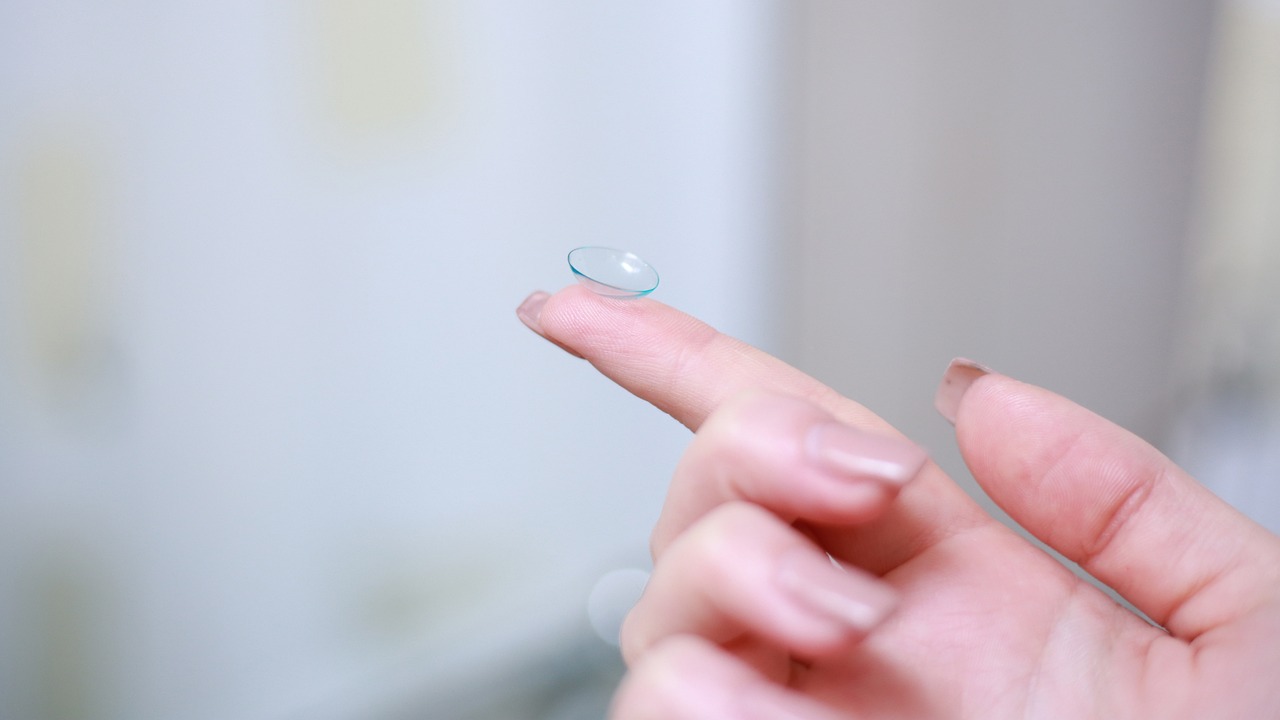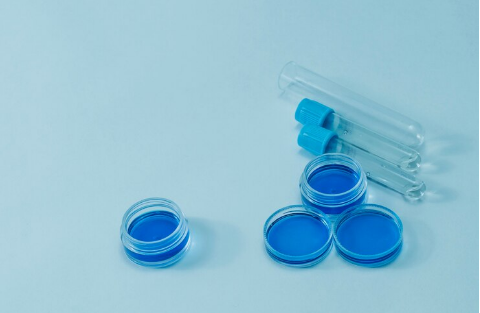How To Insert Contact lens For Beginners( Complete Guide)

Approximately 45 million people in the United States wear contact lenses, significantly enhancing their quality of life. However, proper handling is crucial to avoid serious infections and other issues. Whether you're a seasoned user or a first-time wearer, follow these guidelines to safely insert, remove, and care for your lenses.
Table of Contents
For Soft Contact Lens
This guide applies to soft disposable contacts, not “hard” or rigid gas permeable contacts.
Wash your Hands
To prevent transferring dirt, debris, and oil from your skin to your contact lenses, always ensure your hands are thoroughly clean. Use an oil- and fragrance-free soap for washing, and dry your hands with a lint-free cloth, such as a microfiber towel.
Clean the contact lens
To handle your contact lens, carefully take it out from its case or disposable packaging where it is immersed in contact solution. Use the pads of your fingers, not your nails, to avoid damaging the lens.
Place the lens in your palm and apply a fresh squirt of contact solution to create a small puddle. Always use approved contact solution, avoiding tap water to prevent contamination with harmful bacteria or foreign particles.
Gently rub the lens back and forth on your palm using a finger from your other hand for about 15 seconds. Rinse it with another squirt of solution. This "rub and rinse" method ensures the lens is clean and free of irritants.
Also read How to Clean your Contact Lenses
Hold the contact lens
Place the contact lens on the tip of your index or middle finger, using your dominant hand or the hand you feel comfortable with. The lens should look like a small bowl. If it looks like a dome, it's inside out and needs to be flipped.
To check if the lens is right-side out, look at its edges. A properly oriented lens will have smooth edges, like a clean bowl. If the edges flare out, it’s inside out. Some lenses have tiny numbers or letters on them to help you confirm if it's right-side up.
Open Your Eye
With your free hand, gently pull up your upper eyelid to expose more of your eye. Use one finger to hold it open from above—no need to yank.
For extra space, you can also pull down your lower eyelid using an unoccupied finger from the hand holding the lens.
Stay calm, breathe, and try not to blink. You’re doing great!
Place the contact lens
While looking in a mirror, slowly move the finger with the contact lens towards your eye. Gently touch the lens to your eye's surface.
The lens should naturally leave your finger and stick to your eye's moisture without additional pressure.
Some prefer looking up and placing the lens on the white part of the eye below the iris, while others find it easier to place the lens while looking straight ahead. Choose the method that feels most comfortable for you.
Further Adjustments
After placing the contact lens in your eye, blink a few times to help it settle comfortably. You can also move your eye up, down, left, and right to center the lens.
If your vision is clear through that eye, repeat the process with the other eye. You can use the same hands or switch them, depending on your preference.
Also read to know Why Are My Contact Lenses Uncomfortable?
For Hard Contact Lens
This guide applies to hard contacts, not “soft” contacts.
Wash your Hands
Thoroughly wash your hands with mild soap and water to remove any dirt, oil, or bacteria. Make sure to scrub all parts of your hands, including between your fingers and under your nails, for at least 20 seconds. Rinse well to ensure all soap residue is gone. Dry your hands with a clean, lint-free towel to prevent any particles from transferring to your contact lenses.
Also read Why Do Contact Lenses Cause Headache?
Inspection of Lens
Retrieve your contact lens from its storage case using clean hands, ensuring no dirt or residue is transferred. Place the lens on the tip of your dominant hand's index finger. Examine the lens closely for any signs of damage such as chips or cracks, as well as any debris that might have adhered to its surface. This inspection ensures your lens is in good condition before placing it on your eye, preventing potential discomfort or irritation.
Hold the contact lens
After removing your contact lens from its case, rinse it thoroughly with clear saline solution to cleanse away any remaining storage solution or debris.
Next, prepare to insert the lens into your eye: with the middle finger of your non-dominant hand, gently lift your upper eyelid toward your eyebrow to prevent your eyelashes from obstructing the lens placement.
Simultaneously, use the middle finger of your dominant hand to pull down your lower eyelid, creating a clear and stable space for the lens insertion process. This technique helps ensure that the lens can be smoothly and comfortably placed onto your eye's surface.
Position Your Eyes
While looking straight ahead in front of a mirror, bring the RGP (rigid gas permeable) lens towards your eye, ensuring it remains centered. Gently position the lens in the middle of your eye's surface.
Blink a few times naturally to allow the lens to settle into its correct position. Blinking helps to distribute tears evenly under the lens, promoting comfort and clear vision.
Once you've blinked a few times, release your eyelids slowly to check if the lens feels comfortable and your vision is clear. Ensure there's no discomfort or blurriness, indicating the lens is properly positioned and fitting well on your eye. Adjust as needed to achieve optimal comfort and vision clarity.
Also read What Is a Multifocal Contact Lens?
General Tips for Inserting Contacts
Now that you've learned how to insert your contact lenses, here are some tips to make the process even smoother and more efficient:
Establish a Consistent Routine
Always put in your contacts in the same order every time, whether you start with the right eye or the left. This is particularly important if you have different prescriptions for each eye, as it helps prevent accidentally switching lenses. Sticking to a routine also helps build muscle memory, making the process quicker and more natural over time.
Keep Your Nails Short
Long nails can interfere with inserting your contact lenses and are more likely to scratch or tear them. While learning to put in contacts, consider keeping your nails short. If you prefer long nails, practice to improve your dexterity and ensure you handle the lenses carefully.
Choose Suitable Makeup and Eye Drops
Select oil-free makeup products and mascaras that don't shed fibers to keep your lenses clean and free from irritants. If you need to use eye drops, ensure they are compatible with contact lenses. Non-approved drops can make your lenses oily or cloudy, sometimes permanently.
Stay Calm and Patient
Putting in contact lenses can be challenging initially, and it's normal to need multiple attempts before it becomes second nature. Encourage yourself rather than getting frustrated. Take your time, breathe deeply, and remember you can start over as many times as needed. Cultivating a calm approach will make the process easier and less stressful
Addressing Discomfort
If your contacts feel itchy, burning, or uncomfortable, remove them and inspect the lens. Look for signs of damage, such as tears or scratches. If the lens is damaged, do not reuse it. If it appears undamaged but dirty, clean it using the rub and rinse method, then try reinserting it. If discomfort persists, dispose of the lens and use a new one. Never force yourself to wear a lens that causes consistent discomfort.
Also read How To Remove Contact lens For Beginners
Differences Between Hard and Soft Contact Lenses
Hard Contact Lenses:
- Rigid Gas Permeable (RGP) Lenses: These are the most common type of hard lenses, designed to allow oxygen to reach your cornea, which is essential for eye health.
- Durability: Hard lenses are more durable than soft lenses, often lasting longer and being less prone to tears and damage.
- Higher Infection Risk: Despite their benefits, hard lenses have a higher likelihood of causing infections compared to soft lenses.
- Comfort: Many users find hard lenses less comfortable than soft lenses, especially when first adjusting to them.
Soft Contact Lenses:
- Popularity: Soft contact lenses are more popular than hard lenses due to their flexibility and comfort.
- Comfort: They tend to be more comfortable to wear, making them a preferred choice for many users.
Final Thoughts
Safely putting in and taking out your contact lenses is crucial for the health of your eyes. Always wash your hands with soap and water before handling your contact lenses, and dry them with a lint-free towel to avoid transferring any particles to your lenses. Clean your lenses thoroughly with contact lens solution before putting them in and after taking them out. Avoid using tap water or saliva, which can introduce harmful bacteria. Never sleep in your contact lenses unless they are specifically designed for overnight wear, as this can increase the risk of infections and other eye issues.
If you experience any redness, swelling, discharge, blurred vision, or eye pain, consult your doctor immediately. These symptoms can indicate infections or other serious eye conditions that require prompt attention. By following these practices, you can ensure the health and safety of your eyes while using contact lenses.
Also read about Contact lens Manufacturers/ Companies worldwide
Disclaimer: This guide does not constitute actual medical advice; it represents the opinion of its authors and is for educational or informational purposes only. Readers should not use the information in this guide as a replacement for advice provided by their optometrist or optician. Readers with medical questions or concerns should contact their optometrist or optician.



